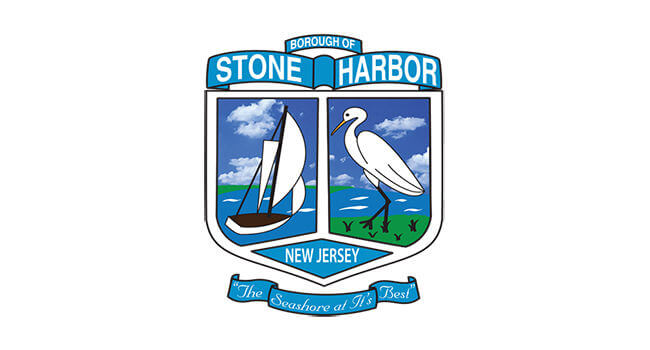STONE HARBOR – The borough’s coastal consultant Douglas Gaffney of Mott MacDonald used the council meeting Sept. 20 as a forum for reporting on several interrelated issues regarding the town’s beaches. The borough is facing unique challenges after being left out of the federal beach nourishment program in 2019.
Gaffney’s report to the borough covered three main areas of work.
Regarding the 2022 Army Corps of Engineers hydraulic beach fill, Gaffney told the borough council that design plans for the project focused on two areas within the municipality. The first is what he termed the northern beach fill, beginning at around 90th Street and running to 114th Street. The second area of attention begins at 122nd Street and moves south to the terminal jetty at 127th Street.
Last month, Gaffney told the council that he expected to soon receive the cost-sharing plan that would specify the share of project costs to be paid by the borough. The cost-sharing issue was not mentioned in this update. The last time Gaffney provided an estimate of the borough’s share, it was approximately $2 million.
Another topic in Gaffney’s update was the status of efforts to preserve the borough’s ability to engage in normal beach maintenance. Soon after Gaffney was hired by the borough, he noted that the municipality’s general permit number 2 (GP#2), a state permit issued by the Department of Environmental Protection (DEP), was scheduled to expire in September. Part of the problem was the lack of a municipal public access plan required as part of the permit process.
Gaffney reported that a draft public access plan was now circulating among governing body members. He expressed the hope that the plan could be formally approved by the council soon so that its approval might help persuade the DEP to extend the existing GP#2 permit and bypass the need to file a new application.
Gaffney did not say how long an extension the borough would be seeking on the GP#2, nor did he mention the status of the borough’s efforts to gain an individual permit. He had said at earlier meetings that he hoped such a permit could be in place by the first quarter of 2023.
The third area in Gaffney’s update concerned the development of a numerical model that is expected to support the evaluation of options for maintenance of the borough beaches, especially in the intervening years between federal nourishment projects.
The model would help the borough look at alternative strategies for maintaining sand on municipal beaches. Erosion will not be prevented but the strategies being considered may slow the process. Gaffney promised a good working model soon.
He explained that the team working on beach strategies is evaluating a list of alternatives. In his update, Gaffney listed six options under consideration.
The first of these is what he termed scraping of sand from the low water area and moving that sand up onto the beach. Scraping sand from one area for the benefit of another has been successful in several coastal towns, including neighboring Avalon. The problem Gaffney noted when he first began his consulting in Stone Harbor is that the borough does not have the same areas of natural sand build-up as Avalon.
The next option Gaffney described was sand fencing, a practice where fences are used to capture windblown sand that can later be spread out on eroded areas of the beaches as needed. Here again, referencing earlier reports by Gaffney to the council, one notes his past statements that windblown sand captured up on the beaches accumulates at a fraction of what is normally lost by wave action moving sand south. The model will hopefully bring more precision to the option.
Thirdly, Gaffney spoke of using dredge soils from the bay side and transporting them to the ocean front. The differences in types of sand may present challenges for how the dredge material could be best used.
Gaffney then turned his attention to the refurbishment of the borough’s long-neglected jetties as a way of preventing sand from moving south as rapidly as it does now. He spoke of the current jetties as porous. This option may include adding, subtracting or extending some jetties.
Gaffney also spoke of breakwaters, a system of structures that run parallel to the beaches. Breakwaters intercept incoming waves and in many cases, create pocket beaches. Gaffney noted that these structures have not been used much along the Atlantic coast.
Finally, Gaffney turned to the issue of dredging sand from oceanside borrow areas in small-scale efforts between larger-scale federal projects. For this, the borough would need access to a dredge. Gaffney suggested that it might make financial sense to obtain one, but only on a county-wide scale. He spoke of the possibility of the county purchasing a dredge for use by several ocean-fronting municipalities. When asked, he said he has not broached the idea with any county officials.
Gaffney’s update elicited few questions from council members.
Thoughts? Information? Email vconti@cmcherald.com.
Cape May – Everyone needs to remember that DT "Hush Money" trial is about his actions prior to him being the President. This is not about him doing actions as a President. He falsified documents to…







